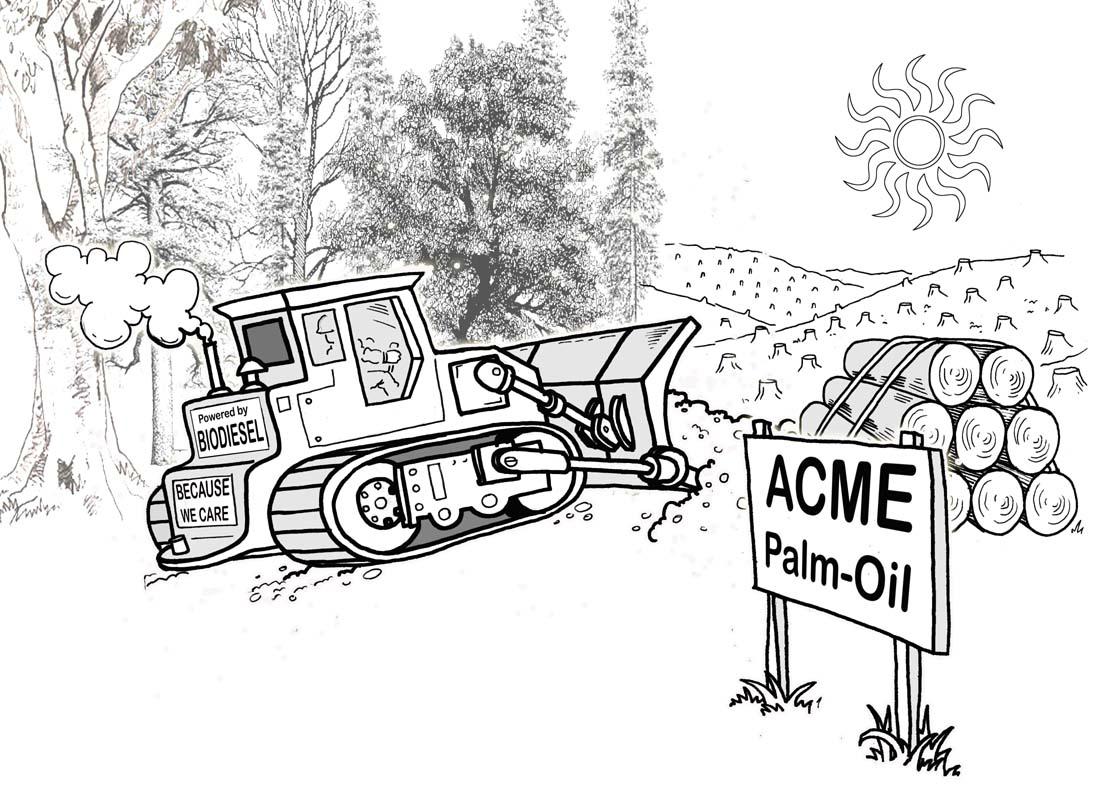Biofuels in the solid form has been in use ever since man discovered fire. Wood was the first form of biofuel that was used even by the ancient people for cooking and heating. With the discovery of electricity, man discovered another way of utilizing the biofuel. Biofuel had been used since a very long time for the production of electricity. This form of fuel was discovered even before the discovery of the fossil fuels, but with the exploration of the fossil fuel like gas, coal, and oil. The production and use of biofuel suffered a severe impact. With the advantages placed by the fossil fuels, they gained a lot of popularity especially in the developed countries. Liquid biofuel have been used in the automotive industry since its inception. In the period of World War II, the high demand of biofuels was due to the increased use as an alternative for imported fuel. In this period, Germany was one of the countries that underwent a serious shortage of fuel. It was during this period that various other inventions took place like the use of gasoline along with alcohol that was derived from potatoes. Britain was the second country which came up with the concept of grain alcohol mixed with petrol. The wars frames were the periods when the various major technological changes took place, but during the period of peace, cheap oil from the gulf countries as well as the Middle East again eased off the pressure. With the increased supply the geopolitical and economic interest in biofuel faded away. A serious fuel crisis again hit the various countries during the period of 1973 and 1979 Thus OPEC made a heavy cut in exports especially to the non OPEC nations. The constant shortage of fuel attracted the attention of the various academics and governments to the issues of energy crisis and the use of biofuels. The twentieth century came with the attention of the people towards the use of biofuels. Some of the main reasons for the people shifting their interest to biofuels were the rising prices of oil, emission of the greenhouse gases, and interest like rural development. |
||
  Director of the Institute of Biological Chemistry at Washington State University will give a far-reaching futuristic perspective of our growing energy needs, with an importance on biofuels, in Seattle this month as a part of WSU’s “innovators” luncheon. In a world once again confronted with volatility in oil prices, with perceptions of a dwindling supply of fossil fuels, and with concerns that biofuels will negatively impact our food supply, Lewis believes solving the growing energy crisis with a sustainable domestic solution represents a "Grand Challenge" for the nation.
There are many eco-benefits to replacing oil with biofuels like ethanol and biodiesel. For example, since such fuels are derived from agricultural crops, they are naturally renewable and our own farmers typically produce them nationally, reducing our dependence on unstable unfamiliar sources of oil. Furthermore, ethanol and biodiesel give off less particulate pollution than usual petroleum-based gasoline and diesel fuels. They also do not contribute to global warming, since they only produce back to the environment the carbon dioxide that their source plants absorbed out of the atmosphere in the first place.
“Learning from the Oil Shock,” Jeffrey Rubin’s view on the future of oil consumption. Rubin suggests that gasoline will rise to $7 per gallon and oil to $225 per barrel by 2012. Rubin goes on to muse that there may be one benefit to this striking rise in price: Because rising ocean-freight costs will make importing goods more expensive, some outsourced production will have to return to the United States, benefiting U.S. manufacturers. On the other hand, Rubin also suggests that the home-building and auto industries will be the hardest hit. As the website states, “Higher gasoline prices push people to mass transit, bicycles and their feet.” Bioenergy provides a range of strategic, energy, economic, and environmental benefits to the people of California . Not only is greater use of bioenergy critical to achieving existing regulatory and policy objectives, but it is also consistent with a range of state environmental goals and provides unique economic development benefits relative to other energy options. Biofuels represent one of the few practical near-term renewable energy alternatives to petroleum transportation fuels. America – and much of the world -- is becoming increasingly electrified. Today, more than half of the electricity generated in the United States comes from coal. For the foreseeable future, coal will continue to be the dominant fuel used for electric power production. The low cost and abundance of coal is one of the primary reasons why consumers in the United States benefit from some of the lowest electricity rates of any free-market economy. The Department’s Office of Fossil Energy is working on ways to keep coal in America ’s electricity future. The key challenge is to remove the environmental objections to the use of coal in tomorrow’s power plants. New technologies being developed in the Fossil Energy program could virtually eliminate the sulfur, nitrogen, and mercury pollutants released when coal is burned. It may also be possible to capture greenhouse gases emitted from coal-fired power plants and prevent them from contributing to global warming concerns. Research is also underway to increase the fuel efficiency of coal-fueled power plants. Today’s plants convert only a third of coal’s energy potential to electricity. New technologies in Energy’s Fossil Energy program could nearly double efficiency levels in the next 10-15 years. Higher efficiencies mean even more affordable electricity and fewer greenhouse gases. While coal is the nation’s major fuel for electric power, natural gas is the fastest growing fuel. More than 90 percent of the power plants to be built in the next 20 years will likely be fueled by natural gas. Natural gas is also likely to be a primary fuel for distributed power generators – mini-power plants that would be sited close to where the electricity is needed. Energy’s Fossil Energy program is developing natural gas-powered fuel cells for future distributed generation applications. Fuel cells use hydrogen that can be extracted from natural gas or perhaps in the future from biomass or coal. Energy’s Office of Nuclear Energy sponsors R&D programs aimed at maintaining the operating capability of the nation’s existing nuclear power plants and developing the next generation of nuclear technologies. Nuclear energy is our nation's largest source of emission-free electricity. The 103 U.S. nuclear units supply about 20 percent of the electricity produced in the United States – second only to coal as a fuel source. The Nuclear Energy program is working to develop cost-efficient technologies that further enhance nuclear safety, minimize the generation of nuclear waste, and further reduce the risk of proliferation. The United States’ electricity infrastructure is one of the greatest engineering marvels of the 20th century. However, to meet the rising electric power demand of the 21st century, significant improvements in America ’s electric system are necessary. Blackouts serve as a powerful reminder of the critical role electricity plays in the everyday lives of people. The mission of the Office of Electricity Delivery and Energy Reliability is to lead national effort to modernize the electric grid, enhance security and reliability of the energy infrastructure, and facilitate recovery from disruptions to the energy supply. In addition, the Office of Electricity Delivery and Energy Reliability seek to develop new technologies for the storage of energy and the transmission of energy that will contribute to energy efficiency of the electric industry. For instance, the copper wires used in typical transmission lines lose a percentage of the electricity passing through them because of resistance, which causes the wires to heat up. But "superconducting" materials have no resistance, and if they are used to transmit electricity in the future, very little of the electricity will be lost. Fossil fuels – coal, oil and natural gas -- currently provide more than 85% of all the energy consumed in the United States , nearly two-thirds of our electricity, and virtually all of our transportation fuels. Moreover, it is likely that the nation’s reliance on fossil fuels to power an expanding economy will actually increase over at least the next two decades even with aggressive development and deployment of new renewable and nuclear technologies. Because our economic health depends on the continued availability of reliable and affordable fossil fuels, the Department of Energy’s Office of Fossil Energy oversees two major fossil fuel efforts: § Emergency stockpiles of crude oil and heating oil § The Department is responsible for maintaining the readiness of the Strategic Petroleum Reserve and the Northeast Home Heating Oil Reserve. In the event of a major supply interruption, the President could order emergency stocks from either of these two reserves to be released into the market. § Research and Development of future fossil energy technologies § Innovative technologies can make the future production and use of fossil fuels more efficient and environmentally cleaner. Energy’s Fossil Energy program, through the National Energy Technology Laboratory, is developing a full array of new technologies that can locate and produce oil and gas beyond the reach of today’s technologies, overcome the environmental challenges of using coal, and extract clean-burning hydrogen from fossil fuels. § In addition, the Office of Fossil Energy supports several initiatives to develop clean fuels from hydrogen and cleaner burning coal. § For statistical information relating to oil, natural gas, coal, and the electricity it produces, visit the Energy Information Administration.  |
One of the first inventors to convince the people of the use of ethanol was a German man named Nikolaus August Otto. Rudolf Diesel is the German inventor of the diesel engine. This car was completely designed to use hemp derived biofuel as fuel. However, with the exploration of huge supplies of crude oil some of the parts of Texas and Pennsylvania petroleum became very cheap and thus lead to the reduction of the use of biofuels. Most of the vehicles like trucks and cars began using this form of fuel which was much cheaper and efficient.
People of the MOU say new generations of biofuels would provide more technology and know-how for the development of a potential joint venture, with the purpose of pursuing biofuel projects in Florida . New Generation Biofuels produces a renewable energy product that is different from traditional biofuels. The Company’s second-generation biofuel is produced using a basic proprietary combination procedure that combines water, additives and vegetable oil other than feedstock. New Generation Biofuels believe that this procedure is easier, cleaner, and less expensive.
 Overall, ethanol is considered to be better for the environment than gasoline. Ethanol-fueled vehicles produce lower carbon monoxide and carbon dioxide emissions, and the same or lower levels of hydrocarbon and oxides of nitrogen emissions. E85, a blend of 85 percent ethanol and 15 percent gasoline, also has fewer unstable components than gasoline, which means fewer emissions from evaporation. Adding ethanol to gasoline in lower percentages, such as 10 percent ethanol and 90 percent gasoline (E10), reduces carbon monoxide emissions from the gasoline and improves fuel octane. Bioenergy is a form of energy that could bring many benefits to the developing as well as the developed world. “The biomass used to create bioenergy or biofuels is abundant in many developing countries, especially in the form of agricultural by-products such as rice husk and sugar cane biogases," said by Dr Jenny Jones of the University of Leeds. As an energy source biomass is nearly 'CO2 neutral', that is any bioenergy crop will fix as much CO2 from the atmosphere as it grows as will be released when it is burnt.  Growing bioenergy crops can give a boost to countryside economies, providing another market for existing crops. Biomass also has the advantage that it can be mixed in with other fuel sources: "Co-firing biomass with coal is currently undertaken at several UK power stations, and this can reduce CO2 emissions while taking advantage of the efficiencies associated with large scale boilers,". There are still plenty of challenges for bioenergy researchers to tackle. Scientists and engineers are investigating how to breed the most desirable traits into promising energy crop candidates and then farm, harvest and use the biomass efficiently and economically. “Other issues include corrosion, fouling and slagging in boilers,” this is a particular problem related with agricultural remains from wheat and straw where the potassium and chlorine content can be high.” Integrating biomass processing with other technologies such as gas turbines, engines and fuel cells is also important. EPSRC supports a diverse portfolio of bioenergy research including work at Leeds and the SUPERGEN Biomass, Biofuels and Energy Crops Consortium. EPSRC and the DTI also support the Bioenergy Network of Excellence which links together eight leading European bioenergy institutes. The future could be bright if research can drive innovation in the emerging bioenergy industry: “the impact could be very large, with new biomass-based industry replacing essentials of the petrochemical industry as oil reserves decline. |
|